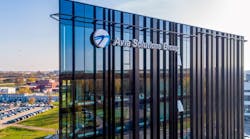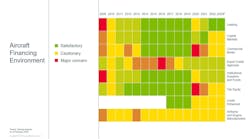Feb. 26--A buyer has snapped up a gem in the Evergreen Aviation & Space Museum's collection, a Ford Trimotor plane flown in 1929 on the first transcontinental passenger route between San Diego and New York.
Other potential buyers are eyeing a Grumman TBM-3 Avenger in the McMinnville museum's collection, a restored torpedo bomber with a $250,000 asking price.
And now another plane has gone up for sale, a 1945 Lockheed P-38L Lightning warbird. Owner Evergreen Vintage Aircraft, a group subsidiary that built an IMAX theater next to the aviation museum, is asking $6.75 million.
The sale activity comes as Evergreen nonprofit managers continue private talks for final purchase of the famed Spruce Goose in their collection. They insist publicly that their museums, water park and theater remain viable despite the bankruptcy of their commercial sister companies. But two Yamhill county commissioners told state legislators last week that the museum is "in imminent danger of closing forever."
Assessors say Evergreen's nonprofits owe more than $1 million in delinquent taxes and interest.
The plane that sold about two weeks ago was a 1928 Ford Trimotor with an asking price of $1.75 million. Mark Clark, president of Courtesy Aircraft Sales, sold it on behalf of an unidentified Evergreen creditor for an undisclosed amount. He says he sympathizes with museum managers who are losing key displays.
"They're being very good about what is for them a little bit of a painful departure," Clark said. "I understand the predicament the museum people are in, with that tax issue, which has got to be kind of frightening to them."
State Sen. Larry George, R-Sherwood, is expected to continue efforts in the Legislature Wednesday to gain expanded tax exemptions for Evergreen's nonprofits. But the lame-duck lawmaker, who hasn't returned calls for comment, faces skepticism from fellow members of the Senate Finance and Revenue Committee, who share legislators' general disdain for bailing out pet causes.
Evergreen International Aviation Inc. and related companies across Oregon 18 from the museum filed a Chapter 7 bankruptcy petition in Delaware Dec. 31. Evergreen museum managers say their operations are entirely separate from those companies. But the Oregon Department of Justice continues investigating alleged commingling of funds between Evergreen's nonprofit and commercial arms.
Broker Simon Brown, of Platinum Fighter Sales in Redondo Beach, Calif., said Tuesday he was listing the P-38 belonging to Evergreen Vintage, which also owns some other planes in the museum's collection.
"It's a shame," Brown said. "Obviously I'd rather see the museum keep all of its assets."
Brown said the completely restored plane is one of only seven flyable P-38s in the world.
"We've had several inquiries from serious collectors already," Brown said. "It'll go sooner rather than later."
The giant Spruce Goose, by contrast, will probably stay where it is. Robert Lyon, a lawyer representing the Aero Club of Southern California, which still has title to the flying boat, said Tuesday he believes the museum owes more than the $50,000 he originally estimated in final payments.
But Lyon said the Aero Club couldn't afford to repossess and move the historic wooden plane. So talks continue, he said.
Larry Wood, Evergreen Aviation & Space Museum executive director, did not return telephone calls for comment Tuesday on the Spruce Goose talks, the plane sales and the nonprofits' viability.
Lyon, who has examined the books, said the nonprofits have depended on substantial infusions over the years from unidentified donors. Evergreen International Aviation Inc., not the museum, wrote monthly checks totaling $500,000 for the base cost of the Spruce Goose, the legendary plane flown once by inventor Howard Hughes.
Clark said he didn't know of any other planes being sold from the museum. A problem, he said, is that many aircraft have been used as collateral for loans, and are further complicated by liens filed against them.
The Ford Trimotor bought by an unidentified purchaser will leave the museum, given that the buyer has ordered freshly overhauled engines for the plane. The good news, Clark said, is that the Trimotor will remain in the United States, available for frequent viewing by the public as it flies.
"I'm very excited," Clark said, "about having one of those airplanes out there flying."
-- Richard Read
Copyright 2014 - The Oregonian, Portland, Ore.

